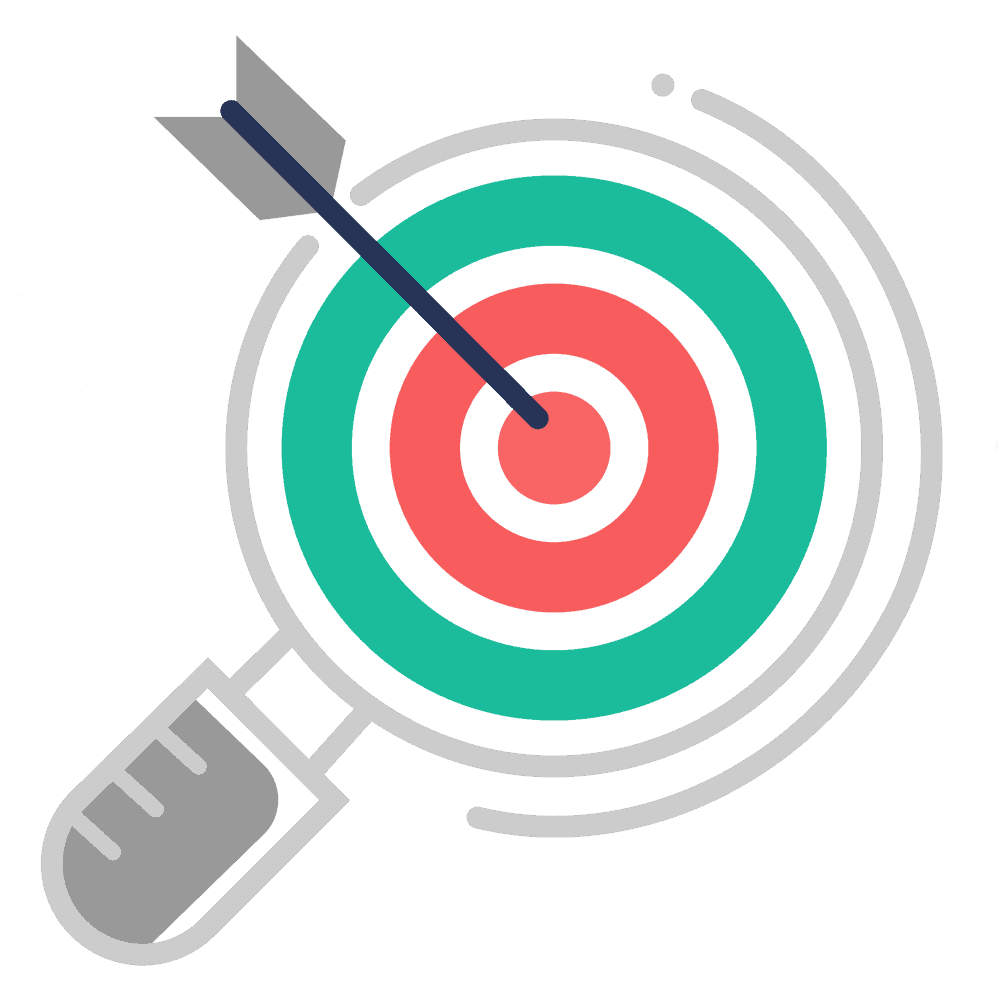Using Neuroscience To Rewire Your Brain For Happiness
Neuroscience is a rapidly developing field that has the potential to transform our understanding of the brain and human behavior.
One area of particular interest is how we can use neuroscience to rewire our brains for happiness. This involves understanding the neural mechanisms underlying positive emotions, as well as identifying strategies for promoting these states.

Recent research in neuroscience [1,2,3] has demonstrated that certain activities such as mindfulness meditation or engaging in physical exercise can promote changes in the structure and function of key brain regions involved in regulating mood and emotion.
By harnessing these findings, it may be possible to develop interventions that target specific neural circuits and pathways implicated in depression, anxiety, and other negative emotional states.
In this article, we will explore some of the latest insights from using neuroscience to rewire your brain for happiness, including both established techniques like cognitive-behavioral therapy (CBT) and newer approaches like neurofeedback training.
The Science Of Happiness: Understanding The Brain
Rewiring neural pathways involves changing the structure of existing neural pathways to create new ones capable of producing desired behaviors. Neurochemical balancing involves manipulating the levels of neurotransmitters in the brain to encourage a desired emotional response.
Neuroplasticity is an important concept in the science of happiness, as it allows for the brain to be rewired and its neural pathways to be changed.
Neurotransmitter levels can be increased or decreased in order to create a desired emotional state, thus creating a sense of well-being in the individual.
Rewiring Neural Pathways
The human brain is an incredibly complex and fascinating organ that plays a crucial role in shaping our emotions, thoughts, and behaviors. Research has shown that negative emotions such as fear, anxiety, and stress can have detrimental effects on both our physical and mental well-being.
However, recent studies have also demonstrated the incredible ability of the brain to adapt and change through a process known as neural plasticity. Neural plasticity refers to the capacity of the brain to form new neural connections or pathways based on experiences.

Positive experiences such as engaging in enjoyable activities or practicing gratitude can stimulate neural activity in areas associated with happiness and well-being. On the other hand, repeated exposure to negative emotions can cause these same areas to become less active while strengthening neural connections associated with negative emotions.
Rewiring neural pathways involves intentionally shifting one’s focus towards positive experiences in order to strengthen those neural connections associated with happiness and well-being. This may involve practices such as mindfulness meditation or cognitive-behavioral therapy designed to help individuals reframe their thinking patterns and cultivate more positive emotions.
By actively working to reshape the structure of their brains through intentional behavior changes, individuals can enhance their overall sense of happiness and well-being over time without relying solely on external factors for fulfillment.
Neurochemical Balancing
Another aspect of understanding the science of happiness lies in exploring neurochemical balancing.
The human brain is a complex system that relies on the interplay between different neurotransmitters to regulate mood and emotions. One important neurotransmitter involved in regulating positive affect is dopamine, which plays a crucial role in reward-seeking behavior and pleasure.
Research has shown [4] that engaging in activities that increase neural activity in the prefrontal cortex can lead to higher levels of dopamine release, resulting in increased feelings of happiness and well-being.
Positive thinking has been found to be an effective way to stimulate this region of the brain, as it activates neural pathways associated with optimism and hopefulness.
However, maintaining a healthy balance of neurotransmitters at the neurochemical level is also essential for optimal mental health.
Imbalances or deficiencies in certain neurotransmitters such as serotonin or norepinephrine have been linked to various mood disorders such as depression or anxiety. Therefore, proper nutrition and exercise can play an integral part in supporting overall brain function and promoting happiness by ensuring adequate levels of these key neurotransmitters are maintained.
Breaking Free From Negative Thought Patterns
Understanding the brain is essential to understanding happiness. Negative emotions are processed in a different part of the brain than positive experiences, and it takes effort to shift from one mode to another. The pre-frontal cortex plays an important role in regulating emotional responses and achieving a balance between negative and positive affect.
Breaking free from negative thought patterns involves rewiring your brain for happiness. This requires identifying automatic negative thoughts and challenging them with evidence-based strategies such as cognitive behavioral therapy (CBT). It also involves cultivating positive emotions through mindfulness meditation, gratitude practices, and social connections.

Overall, the key to rewiring your brain for happiness is breaking free from habitual negativity. By training yourself to focus on positive experiences, you can strengthen neural pathways associated with well-being and resilience.
Practicing mindfulness is an effective way to achieve this goal by promoting self-awareness and reducing stress reactivity. In the following section, we will explore how mindfulness can be integrated into daily life as a powerful tool for cultivating happiness.
Practicing Mindfulness: A Key To Happiness
Mindfulness is a powerful technique for rewiring the brain for happiness. By focusing one’s attention on present-moment experiences, mindfulness can help to reduce negative emotions and increase positive ones. Studies have shown that regular practice of mindfulness meditation can lead to changes in the structure and function of the brain, resulting in greater emotional resilience and overall well-being.
One key aspect of mindfulness practice is deep breathing. This involves taking slow, deliberate breaths while paying close attention to the sensation of air moving in and out of the body. Deep breathing has been found to activate the parasympathetic nervous system, which helps to calm the body’s stress response. It also increases oxygen flow to the brain, improving cognitive function and promoting feelings of relaxation and peace.
Overall, practicing mindfulness is an effective way to rewire your brain for happiness by reducing negative emotions and increasing positive ones. By incorporating techniques such as deep breathing into daily life, individuals can cultivate a sense of inner calmness and positivity that will benefit their mental health and well-being over time.
In the next section, we will explore how cultivating positive experiences and emotions can further enhance this process.
Cultivating Positive Experiences And Emotions
Mindfulness is a powerful tool for achieving happiness as it allows individuals to develop awareness and acceptance of their thoughts and feelings. However, simply being aware of negative emotions may not be enough to cultivate positive experiences and emotions. It is important to actively work towards increasing positive neural activity in the brain.
One way to do this is by engaging in gratitude practices. Gratitude has been linked with increased activity in the prefrontal cortex, an area associated with decision-making, reasoning, and impulse control.
By focusing on what we are grateful for, we can train our brains to identify positive experiences more easily and increase overall well-being.
In addition to gratitude practices, cultivating positive experiences through activities such as hobbies or spending time with loved ones can also lead to increased neural activity related to happiness.
By intentionally seeking out enjoyable experiences and savoring them, individuals can rewire their brains towards positivity and decrease reliance on negative emotions.
Overall, incorporating these techniques into daily life can have a significant impact on long-term happiness levels.
The Power Of Gratitude
Gratitude is a powerful tool that can rewire the brain for happiness. Studies have shown that practicing gratitude can increase positive emotions and decrease negative emotions in individuals. When we focus on what we are grateful for, our neural activity shifts to the pre-frontal cortex, which is responsible for decision-making, planning, and emotional regulation.

One effective way of practicing gratitude is by keeping a ‘gratitude jar’. This involves writing down things you are grateful for on small slips of paper and adding them to a jar each day. The act of reflecting on positive experiences and expressing gratitude has been found to increase activity in areas of the brain associated with reward processing and emotion regulation.
Furthermore, regularly practicing gratitude can also build resilience and coping strategies. By focusing on what we are thankful for, we train our brains to look for the good in situations rather than always dwelling on the negative. In turn, this mindset shift can lead to increased emotional well-being and better overall mental health.
Building Resilience And Coping Strategies
Metaphorically speaking, building resilience is like strengthening the foundation of a house to withstand natural disasters. In order to build resilience and cope with negative emotions, it is important to focus on cultivating positive experiences that can activate neural activity in the prefrontal cortex – the part of our brain responsible for decision-making, problem-solving, and regulating emotions.
One effective tool for building resilience is practicing gratitude. This involves regularly reflecting on things we are thankful for and storing them in a ‘gratitude jar’. Research has shown that consistently engaging in this practice can increase levels of happiness and well-being while decreasing symptoms of depression and anxiety.
Additionally, regular exercise has been found to be highly beneficial for reducing stress levels and enhancing emotional regulation. Another technique for coping with difficult emotions is called cognitive reappraisal. This strategy involves shifting one’s perspective on a situation or emotion by reframing it in a more positive light. For example, instead of feeling defeated after receiving critical feedback at work, one could view it as an opportunity to grow and improve their skills.
Moving forward into social connections and community support, research has demonstrated that having strong relationships with others can greatly enhance overall well-being. Building supportive networks can provide us with resources during times of distress while also boosting self-esteem and feelings of belongingness.
To implement these strategies, you can keep a daily journal where you write down three good things that happened each day. Practice mindfulness meditation for 10 minutes every morning. Engage in physical activities such as running or yoga at least twice per week. Connect with nature by taking walks outside or spending time gardening. Spend quality time with loved ones by scheduling weekly dinner dates or game nights.
Social Connections And Community Support
Positive experiences are essential to rewiring the brain for happiness. Social connections and community support can provide such positive experiences, which play a crucial role in promoting neural activity that supports happiness.
Negative emotions have been shown to reduce hippocampal volume and increase amygdala activation, leading to depression or anxiety disorders. In contrast, social interactions promote neurogenesis in the hippocampus, which is associated with better learning ability and memory.
Neural structures involved in social cognition include the prefrontal cortex (PFC), anterior cingulate cortex (ACC), temporal lobe, insula, and amygdala. These structures work together to process social information from other people’s facial expressions, vocal tones, gestures, body movements, etc., which help us recognize their emotional states and intentions.
Studies have found that increased social connectedness enhances functional connectivity between these regions of the brain and promotes greater empathy and prosocial behavior.
Moreover, research suggests that having strong relationships with others may also protect against cognitive decline as we age. A study conducted on older adults revealed that those who were socially active had lower levels of beta-amyloid protein deposition in their brains compared to individuals who were less engaged socially.
Therefore, nurturing meaningful relationships with family members or friends could be an effective strategy for maintaining good mental health throughout life.
Transition: While social connections are vital to our well-being, they alone cannot guarantee long-term happiness. Lifestyle changes that encourage healthy habits will be discussed next as another way to rewire your brain for positivity and joy.
Lifestyle Changes For A Happier Brain
Social connections and community support are essential factors that contribute to happiness. However, lifestyle changes also play a significant role in rewiring the brain for happiness.
Negative emotions can arise from various life events such as stressors, trauma, or loss. These negative experiences can lead to structural and functional changes in the brain that perpetuate feelings of sadness, anxiety, and anger.
To counteract these negative emotions and rewire the brain for happiness, individuals need to engage in positive experiences regularly. Positive experiences stimulate reward centers in the brain, leading to increased production of neurotransmitters like dopamine and serotonin which promote feelings of pleasure and well-being.
Engaging regularly with positive experiences could range from simple pleasures like spending time with loved ones or engaging in hobbies to more complex activities like travel or volunteering.
Deep breathing is an effective technique used by many people to reduce stress levels and manage negative emotions effectively. This technique helps regulate heart rate variability (HRV), which has been linked with improved mental health outcomes.
Deep breathing exercises help increase oxygenation within the body leading to relaxation responses that modulate neural activity positively. Incorporating deep breathing into daily routines could be helpful in creating new neural connections associated with calmness and positivity.
As we have seen earlier, social connections, and community support alongside lifestyle changes are crucial elements required for rewiring our brains towards happiness. By incorporating habits such as regular exercise, and meditation practices among others, one can sustainably maintain this newfound state of mind even under challenging circumstances while keeping negativity at bay.
The next section focuses on tips and tricks that will help you sustain these positive changes without feeling overwhelmed or discouraged along your journey toward achieving long-term happiness goals.
Sustaining Positive Changes: Tips And Tricks
To sustain positive changes, it is essential to incorporate daily practices that promote happiness. One effective technique is deep breathing exercises which have been shown to reduce negative emotions such as anxiety and stress. This simple yet powerful technique activates the parasympathetic nervous system, slowing down our heart rate and calming us down. As a result, we experience an increase in neural activity within the prefrontal cortex, responsible for decision-making, attention span, and emotional regulation. By taking just a few minutes each day to practice deep breathing, we can build resilience against negative experiences.
Another way to sustain happiness is by focusing on positive experiences throughout the day. It is easy to get caught up in negativity bias where we tend to focus more on negative events than positive ones. However, research has shown that intentionally paying attention to positive experiences leads to increased well-being over time. To help with this practice, try creating a gratitude journal or taking note of three good things that happened during your day before going to bed.
Additionally, maintaining social connections is crucial for overall happiness and well-being. During times of stress or uncertainty, having support from friends and family can make all the difference in how we feel about ourselves and our lives. In fact, studies have found that people who have close relationships with others are happier and live longer than those who do not prioritize social connections.
| Negative Emotions | Positive Experiences |
|---|---|
| Physiological response (increased heart rate) | Increased neural activity in reward centers |
| Decreased immune function | Improved cognitive function |
| Higher risk of chronic illness | Enhanced sense of purpose |
In summary, sustaining positive changes requires consistent effort toward building habits that promote happiness. Incorporating techniques such as deep breathing exercises and focusing on positive experiences can lead to increased neural activity within the prefrontal cortex while reducing negative emotions like anxiety and stress. Additionally, maintaining social connections can have a significant impact on overall well-being and happiness. By prioritizing daily practices that promote positivity, we can rewire our brains for long-term happiness.
Final Thoughts and Takeaways
Rewiring the brain for happiness is a complex and multifaceted process that requires dedication, patience, and an understanding of the underlying neural mechanisms. Common barriers to rewiring include negative thought patterns, past traumas, and cognitive biases.
While mindfulness and gratitude practices can be effective tools for promoting positive emotional states, they may not be suitable for everyone.
The length of time it takes to see positive changes in brain functioning and emotional well-being varies from person to person depending on individual factors such as personality traits, motivation level, and baseline levels of happiness.
The brain’s reward system plays a crucial role in experiencing happiness by releasing neurotransmitters such as dopamine when we engage in pleasurable activities or have positive experiences.
Using neuroscience to rewire the brain for happiness is a promising avenue for improving emotional well-being. However, it requires a comprehensive approach that includes identifying and addressing common barriers to rewiring while utilizing evidence-based techniques such as mindfulness and gratitude practices.
By understanding the underlying neural mechanisms involved in experiencing happiness, individuals can better navigate their own mental landscape towards greater fulfillment and contentment – much like navigating through a dense forest with a map or compass.
We published a few other articles that would expand your knowledge on how to rewire your brain effectively. Here are links to these documents:
Rewire your anxious brain for success: Easier than you think
Rewire your Brain with Neurofeedback
Rewire Your Brain Through Mindfulness Practices
Neuroplasticity To Rewire Your Brain
Rewire Your Brain With Cognitive Behavioral Therapy
Rewire Your Brain To Break Bad Habits
Sleep And Rewire Your Brain: The Connection Revealed
Rewire your Brain with Self-Talk and Visualization
Theta Waves | Rewire your brain effectively
Frequently Asked Questions about Neuroscience To Rewire Your Brain For Happiness


Award-winning CTO and IT expert with 20+ years of experience in technical innovation and digital transformation. Holds degrees in computer science and business administration with honors. Impressive record as a former CIO and Head of technology for leading educational institutions in the USA. Leads the editorial team at Product-Evaluation.com.

















